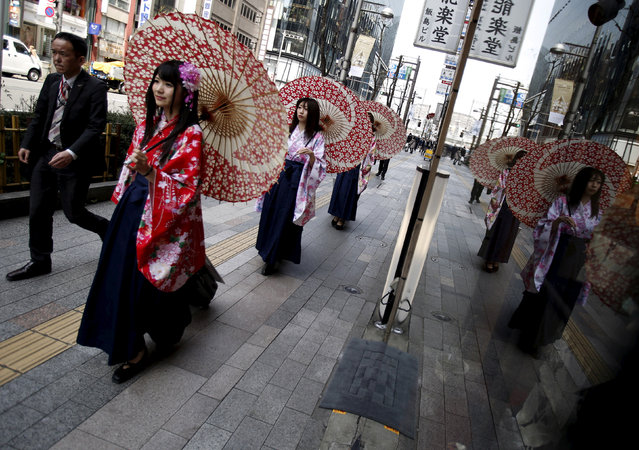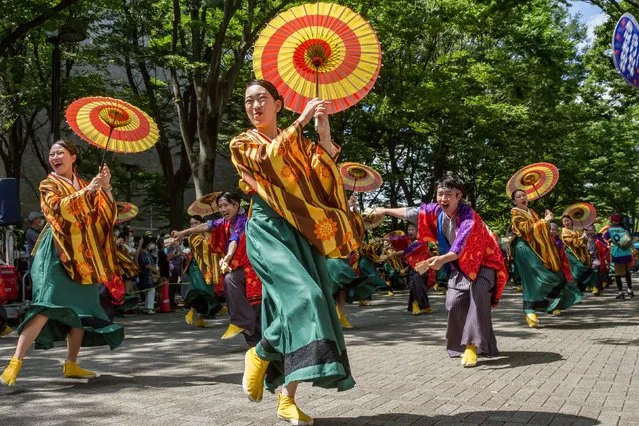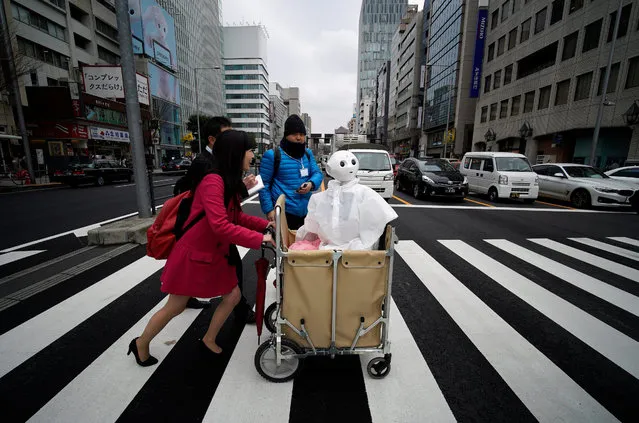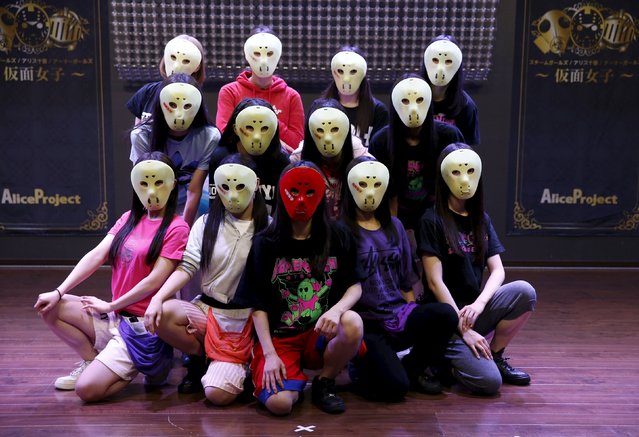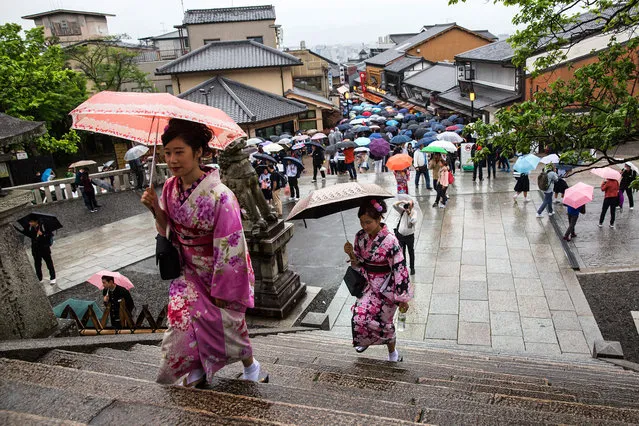
People wrapped in blankets sit on the road as they are evacuated from a hotel after an earthquake in Kumamoto, southern Japan, in this photo taken by Kyodo April 14, 2016. A powerful earthquake with a magnitude of 6.5 knocked over buildings in southern Japan on Thursday evening, and police said people may be trapped underneath. (Photo by Reuters/Kyodo News)
15 Apr 2016 10:35:00,post received
0 comments

